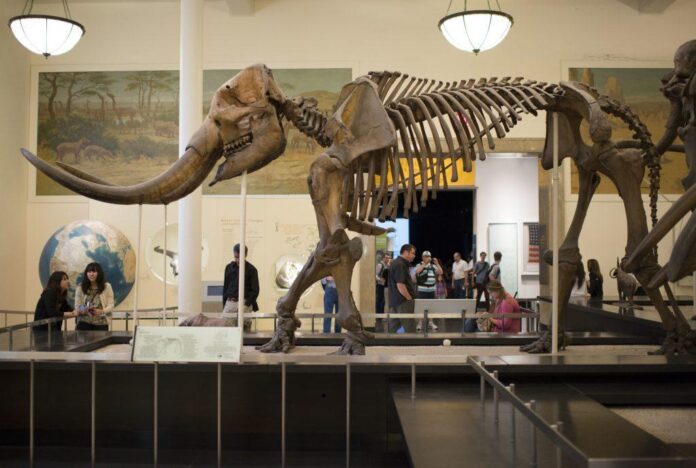Most people wouldn’t want to go swimming in New York City’s East River. But in recent weeks, there’s been a surprising amount of activity on the waterfront by FDR Drive and East 65th Street, thanks to a wild rumor that the American Museum of Natural History dumped large quantities of valuable mammoth bones on the on the northern fringes of East Midtown over 80 years ago.
The craze was ignited by the December 30 episode of the popular podcast “The Joe Rogan Experience.” A guest, fossil collector and gold miner John Reeves, shared a remarkable tale he promised would “start a bone rush” for “extremely valuable” mammoth remains.
Between strong currents, traffic from large vessels, and frigid temperatures (even during this abnormally warm, snowless winter), the East River is a dangerous place to dive. But that didn’t stop Rogan’s podcast from captivating the imagination of listeners hoping to strike it rich by recovering the sunken remains of prehistoric mammals—or keep some listeners from taking the plunge to see for themselves if the theory held water.
“This is where dreams are made,” Jake Koehler, an underwater treasure hunter, shouted in a video on his YouTube channel before submerging himself in the East River’s murky depths.
“Oh, it’s wicked cold!” he told the camera while underwater.
Koehler had travelled from Georgia from the occasion, braving the frigid waters for just 15 or 20 minutes, until the temperature became too much. He and fellow diver and YouTuber Rick Cochrane didn’t end up finding any bones—but they weren’t alone in hunting.
“I think the chances are just as good as the lottery. And people buy those tickets every day,” Don Gann, a commercial diver from North Arlington, New Jersey, told the Associated Press earlier this month, noting that he’d been diving for bones every day.

This matched pair of fossil woolly mammoth tusks sold for €75,000 ($72,681) at Heeink’s in the Netherlands in September 2022. Photo courtesy of Heeink’s, Zwolle, the Netherlands.
The auction record for a complete mammoth skeleton is €548,250 ($644,166), set in 2017 at Aguttes in France, according to the Artnet Price Database. In September, Heeink’s in the Netherlands set a new high for a set of tusks, selling a pair for €75,000 ($72,681).
And massive Ice Age mammals have long fascinated U.S. audiences, with early American painter Charles Willson Peale painting a mastodon excavation and purchasing the site to continue the dig. He displayed its remains in his museum—which was the nation’s first—famously featured in his 1822 painting .
Given this long tradition, it seems almost unbelievable that an institution like the American Museum of Natural History would have disposed of mammoth fossils.

Charles Willson Peale, (1822). Collection of the Pennsylvania Academy of Fine Art.
But according to Reeves, the museum jettisoned “a boxcar load” of ancient bones and tusks weighing some “50 tons” because it believed their condition was poor and there was nothing to be gained from their further study. Rather than dedicating valuable storage space to the remains, they were tossed into the river.
The ill-fated skeletons and fossils of these extinct megafauna are said to have come to the museum courtesy of a trustee, Childs Frick, whose father, industrialist Henry Clay Frick, has his own namesake museum on the city’s Upper East Side. The younger Frick started conducting excavations in 1917, eventually hiring one Richard H. Osborne to work on his “bone wagon” in Alaska in the 1940s.
Reeves based his sensationalist “bone rush” proclamation on a passage from the manuscript for Osborne’s unpublished book, , written in 2000.
Osborne, an anthropologist, died in 2005, and Reeves, who owns the land where Frick ran his “bone wagon,” eventually acquired the manuscript. It was co-authored by Robert L. Evander, who worked for 25 years as paleontologist at the museum; and Alaska archaeologist Robert A. Sattler.
That the museum could have dumped prehistoric remains in the river was “implausible,” Evander told the , while Sattler maintained that if any bones or fossils wound up in the water it would have been tiny fragments, not full tusks.
The institution itself was also skeptical of the tale.
“We do not have any record of the disposal of these fossils in the East River,” a museum spokesperson said in a statement, “nor have we been able to find any record of this report in the museum’s archives or other scientific sources.”

























